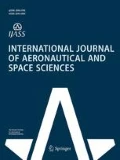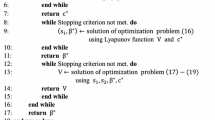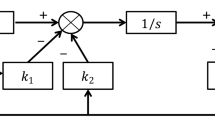Abstract
The performance characteristics of the autopilot must have a fast response to intercept a maneuvering target and reasonable robustness for system stability under the effect of un-modeled dynamics and noise. By the conventional approach, the three-loop autopilot design is handled by time constant, damping factor and open-loop crossover frequency to achieve the desired performance requirements. Note that the general optimal theory can be also used to obtain the same gain as obtained from the conventional approach. The key idea of using optimal control technique for feedback gain design revolves around appropriate selection and interpretation of the performance index for which the control is optimal. This paper derives an explicit expression, which relates the weight parameters appearing in the quadratic performance index to the design parameters such as open-loop crossover frequency, phase margin, damping factor, or time constant, etc. Since all set of selection of design parameters do not guarantee existence of optimal control law, explicit inequalities, which are named the optimality criteria for the three-loop autopilot (OC3L), are derived to find out all set of design parameters for which the control law is optimal. Finally, based on OC3L, an efficient gain selection procedure is developed, where time constant is set to design objective and open-loop crossover frequency and phase margin as design constraints. The effectiveness of the proposed technique is illustrated through numerical simulations.




Similar content being viewed by others
References
Abd-elatif MA, Qian L, Bo Y (2016) Optimization of three-loop missile autopilot gain under crossover frequency constraint. Def Technol 12:32–38
Mracek CP, Ridgely DB (Aug. 2005) Missile longitudinal autopilots: connections between optimal control and classical topologies. AIAA guidance, navigation, and control conference, San Francisco
Mracek CP, Ridgely DB (Aug. 2005) Missile longitudinal autopilots: comparison of multiple three loop topologies. AIAA guidance, navigation, and control conference, San Francisco
Nesline FW, Zarchan P (1984) Why modern controllers can go unstable in practice. AIAA guidance, navigation, and control conference, pp 495–500
Jackson PB (2010) Overview of missile flight control systems. Johns Hopkins APL Tech., pp 9–24
De-fu L, Jun-fang F, Zaikang Q, Yu M (2009) Analysis and improvement of missile three-loop autopilots. J Syst Eng Electron 20:844–851
Hui W, Defu L, Jiaxin W, Tao S (2012) An analytical design method for the missile two-loop acceleration autopilot. System simulation and scientific computing, Heidelberg, pp 157–165
Fan J, Su Z, Li Q, Dong S (2011) Design and control limitation analysis of two-loop autopilot. IEEE Chinese control and decision conference, China, pp 3814–3818
Lidan X, Kenan Z, Wanchun C, Xingliang Y (2010) Optimal control and output feedback considerations for missile with blended aero-fin and lateral impulsive thrust. Chin J Aeronaut 23:401–408
Sreenuch T, Tsourdos A, Hughes E, White B (2004) Lateral acceleration control design of a non-linear homing missile using multi-objective evolution strategies. American control conference, vol 4, Boston, pp 3628–3633
Moon BM, Sang DK, Tahk MJ (2007) Missile autopilot design via output redefinition and gain optimization technique. SICE 2007 annual conference, Takamatsu, pp 2615–2619
Kalman RE (1963) When is a linear control system optimal? Proceedings of joint automatic control conference, Minneapolis, pp 1–15
Anderson BDO (1966) The inverse problem of optimal control, Rep. Sel-66-39. Stanford Electronics Laboratories, California
Chang SSL (1961) Synthesis of optimum control systems. McGraw-Hill, New York
Anderson BDO, Moore JB (1971) Linear optimal control. Prentice-Hall, Englewood Cliffs
Zarchan P (2002) Tactical and strategic missile guidance, 4th edn, AIAA, vol 199. Progress in astronautics and aeronautics, Reston
Author information
Authors and Affiliations
Corresponding author
Rights and permissions
About this article
Cite this article
Hwang, D., Tahk, MJ. The Inverse Optimal Control Problem for a Three-Loop Missile Autopilot. Int. J. Aeronaut. Space Sci. 19, 411–422 (2018). https://doi.org/10.1007/s42405-018-0014-6
Received:
Revised:
Accepted:
Published:
Issue Date:
DOI: https://doi.org/10.1007/s42405-018-0014-6




